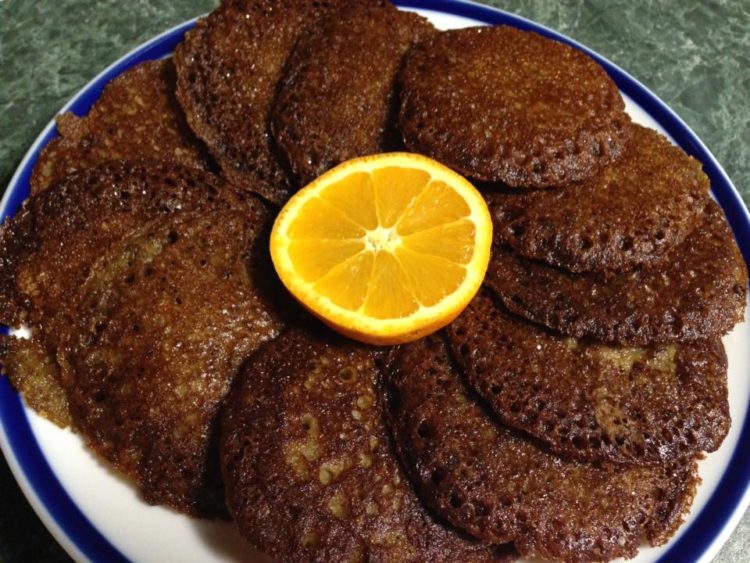Ingredients:
For fermentation:
1.5 Cups water
1 Cup teff flour
For cooking:
1/4 teaspoon salt
1/2 teaspoon baking soda
Coconut oil for cooking
Method:
Combine teff and water in a bowl. Mix together and make sure there is room in the bowl for the batter to rise (it should begin to do so after 4+ hours). The mixture should be like a thin pancake batter in consistency. Cover the bowl with a clean cloth and ferment for 2 days, undisturbed, on the counter (about 70F). Small bubbles are normal during the fermentation. The mixture will be yeasty or sour smelling.
After 2 days, you are ready to cook your Ethiopian pancakes. Add salt and baking soda to your mixture and stir. The baking soda helps to make your pancakes less sour. If you want the final product (injera) to be less sour, add more baking soda, if you like it more sour, use less baking soda. Now, you are ready to cook injera!
Heat a cast iron pan over medium heat (have a tight-fitting lid available). Add about 1/2 tablespoon of coconut oil. Let it melt. Pour about 1/2 cup of batter in the center of the skillet.
Tilt and swirl the skillet quickly to coat it evenly with the batter. Let the pancake cook for 1 minute. When you see holes start to form on the surface, cover the skillet with the lid to steam the injera.
Cook for about 3 minutes, just until the edges pull away from the sides and the top is set. The injera, unlike a regular pancake, does not get flipped. After cooking, let it rest for a couple of minutes and it should get spongy.
The first couple of injeras might be a mess. Just like with pancakes – that’s normal. The rest of them will get better.

